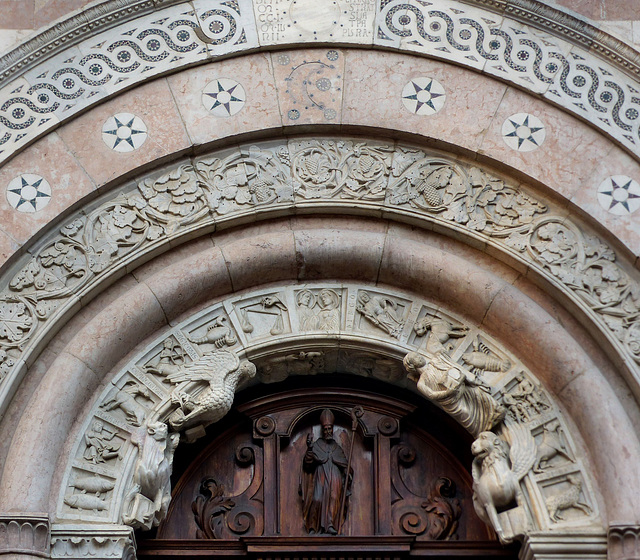Castello di Canossa
Worms - Cathedral
Worms - Cathedral
Worms - Cathedral
Worms - Cathedral
Worms - Cathedral
Worms - Cathedral
Worms - Cathedral
Worms - Cathedral
Worms - Cathedral
Worms - Cathedral
Worms - Cathedral
Worms - Cathedral
Worms - Cathedral
Cahors - Cathédrale Saint-Étienne
Cahors - Cathédrale Saint-Étienne
Cahors - Cathédrale Saint-Étienne
Cahors - Cathédrale Saint-Étienne
Cahors - Cathédrale Saint-Étienne
Cahors - Cathédrale Saint-Étienne
Cahors - Cathédrale Saint-Étienne
Cahors - Cathédrale Saint-Étienne
Cahors - Cathédrale Saint-Étienne
Cahors - Cathédrale Saint-Étienne
Cahors - Cathédrale Saint-Étienne
Location
See also...
Keywords
Authorizations, license
-
Visible by: Everyone -
All rights reserved
-
171 visits
Foligno - Cattedrale di San Feliciano


Foligno was an Umbrian settlement, taken over by the Romans in 295 BC and named "Fulginiae". After the fall of the Roman Empire it was part of the Duchy of Spoleto. In 881 it got sacked and looted by Saracens, in 915 and again in 924 it was ruined by Magyar troops. The survivers decided to move close to the "Civitas Sancti Feliciani", a strongly fortified church where Bishop and martyr Feliciano was buried.
Thanks to Barbarossa it gained the status of free city in 1165. Siding first with the Guelph party, Foligno became Ghibelline later and was a rival of Perugia. Foligno changed hands often during the wars of the 13th century. From the the 14th century on the city flourished, controlling large territory. Foligno was part of the Papal States until 1860 (with only two short exceptions).
Foligno has suffered from a major earthquake in 1997, some traces can still be found.
The "Cattedrale di San Feliciano" was built on the site of an earlier basilica ("Civitas Sancti Feliciani") 1133-1201. It is the seat of the Bishop of Foligno. The cathedral has two façades, the principal façade, facing the Piazza Grande, and the secondary façade facing the Piazza della Repubblica.
This is the center of the secondary façade´s portal, that dates from 1201. It is the work of the master sculptors and architects Rodolfo and Binello.
The zodiacs are on the inner archivolt, the next one has entangled vines (and grapes). The two outer archivolts consist out of nice "cosmatesque" mosaics. In the center are moon, stars and sun under an inscription of the keystone telling the onlookers, that "stars, sun, and moon reveal a time of purity”.
Pope Innocent III had crowned Otto of Brunswick as Emperor Otto IV of the Holy Roman Empire in 1209. But this was not the begin of a "time of purity”.
Otto IV broke all promises and commanded Innocent III to annul the Concordat of Worms. Innocent III promptly excommunicated Otto IV what triggered a pan European power game, that Otto IV lost, when his armee was beaten in the Battle of Bouvines in 1214. Otto IV was followed by Frederick II (aka "Stupor Mundi").
Thanks to Barbarossa it gained the status of free city in 1165. Siding first with the Guelph party, Foligno became Ghibelline later and was a rival of Perugia. Foligno changed hands often during the wars of the 13th century. From the the 14th century on the city flourished, controlling large territory. Foligno was part of the Papal States until 1860 (with only two short exceptions).
Foligno has suffered from a major earthquake in 1997, some traces can still be found.
The "Cattedrale di San Feliciano" was built on the site of an earlier basilica ("Civitas Sancti Feliciani") 1133-1201. It is the seat of the Bishop of Foligno. The cathedral has two façades, the principal façade, facing the Piazza Grande, and the secondary façade facing the Piazza della Repubblica.
This is the center of the secondary façade´s portal, that dates from 1201. It is the work of the master sculptors and architects Rodolfo and Binello.
The zodiacs are on the inner archivolt, the next one has entangled vines (and grapes). The two outer archivolts consist out of nice "cosmatesque" mosaics. In the center are moon, stars and sun under an inscription of the keystone telling the onlookers, that "stars, sun, and moon reveal a time of purity”.
Pope Innocent III had crowned Otto of Brunswick as Emperor Otto IV of the Holy Roman Empire in 1209. But this was not the begin of a "time of purity”.
Otto IV broke all promises and commanded Innocent III to annul the Concordat of Worms. Innocent III promptly excommunicated Otto IV what triggered a pan European power game, that Otto IV lost, when his armee was beaten in the Battle of Bouvines in 1214. Otto IV was followed by Frederick II (aka "Stupor Mundi").
- Keyboard shortcuts:
Jump to top
RSS feed- Latest comments - Subscribe to the comment feeds of this photo
- ipernity © 2007-2024
- Help & Contact
|
Club news
|
About ipernity
|
History |
ipernity Club & Prices |
Guide of good conduct
Donate | Group guidelines | Privacy policy | Terms of use | Statutes | In memoria -
Facebook
Twitter

Sign-in to write a comment.